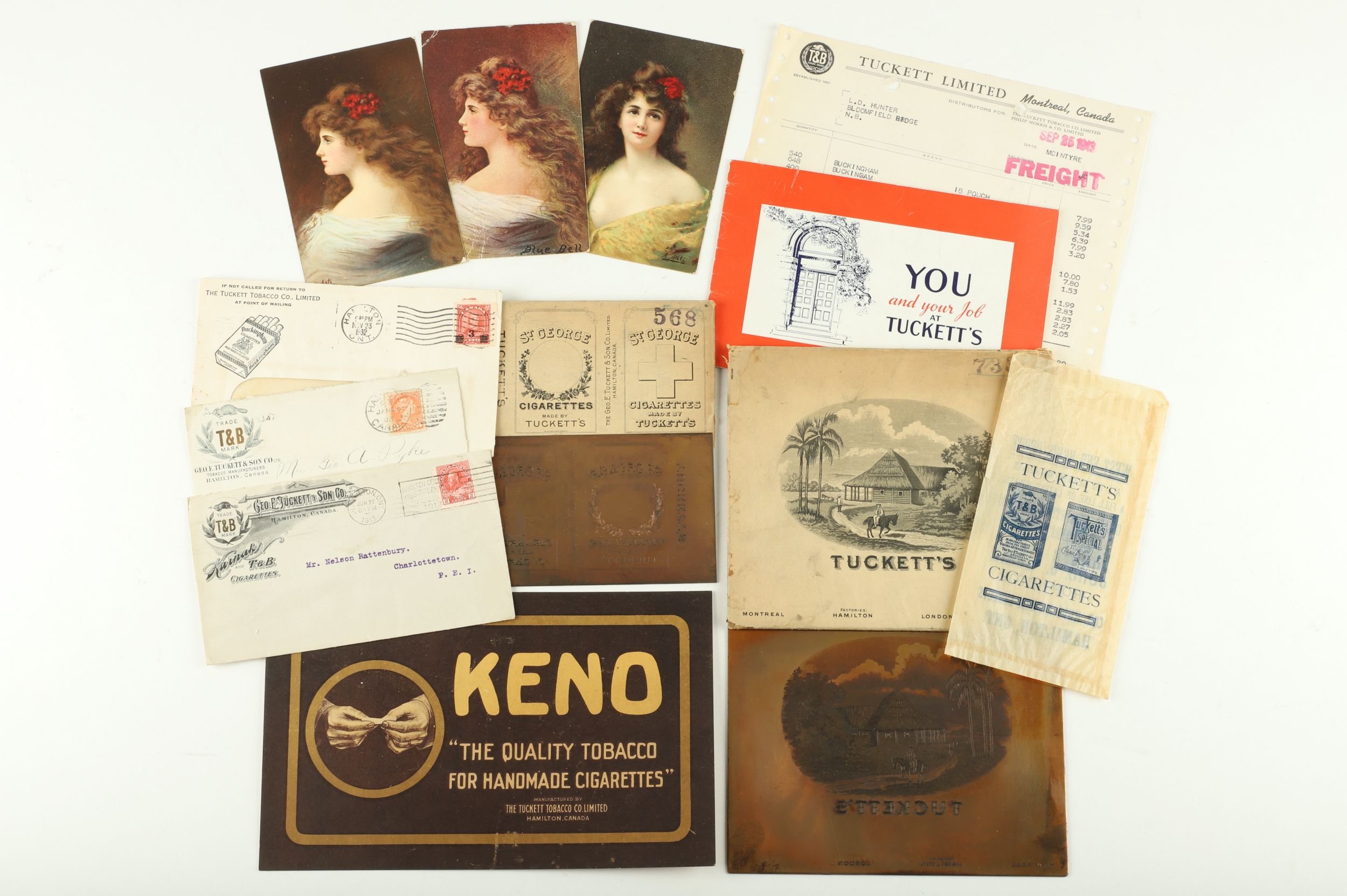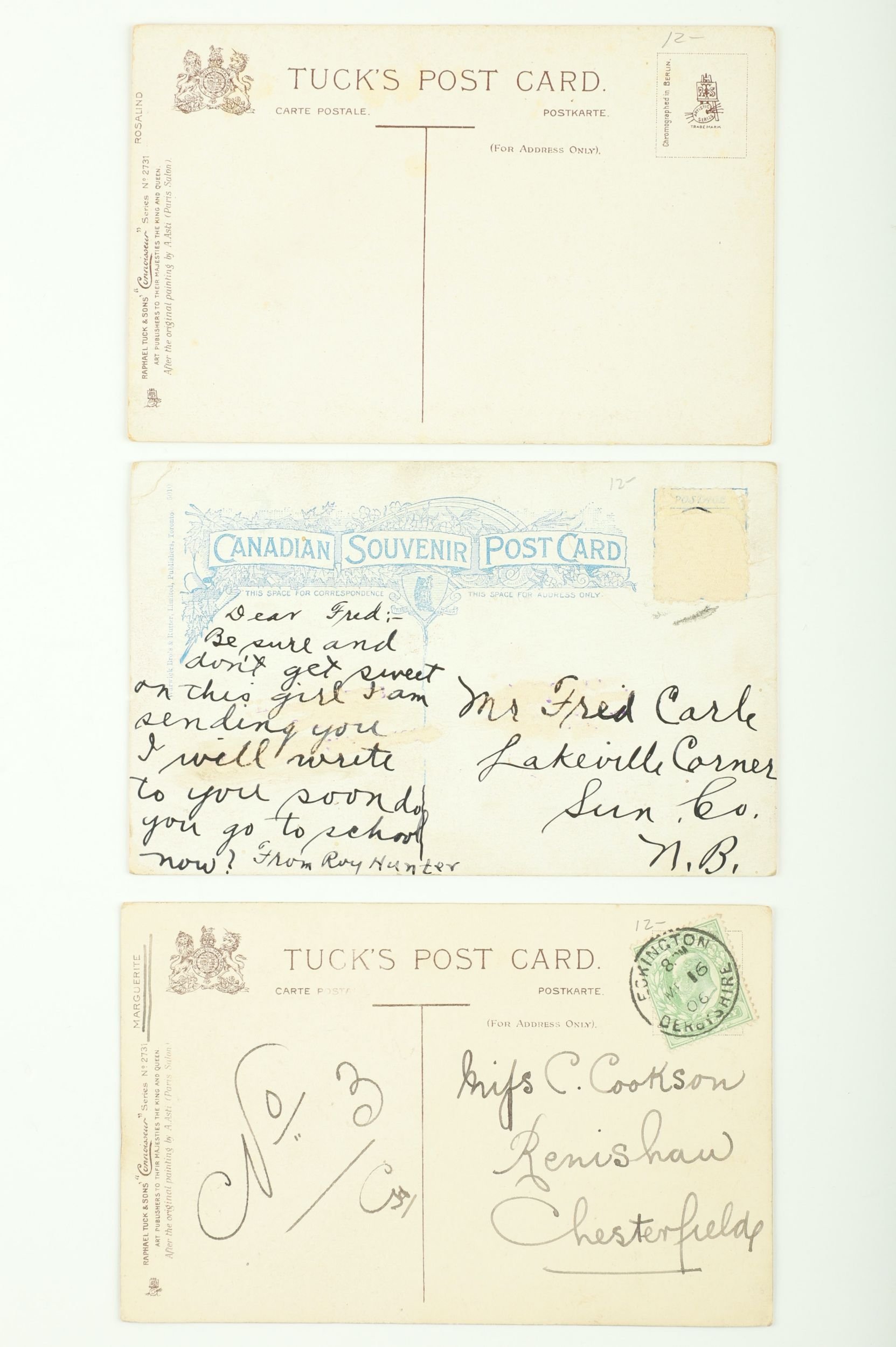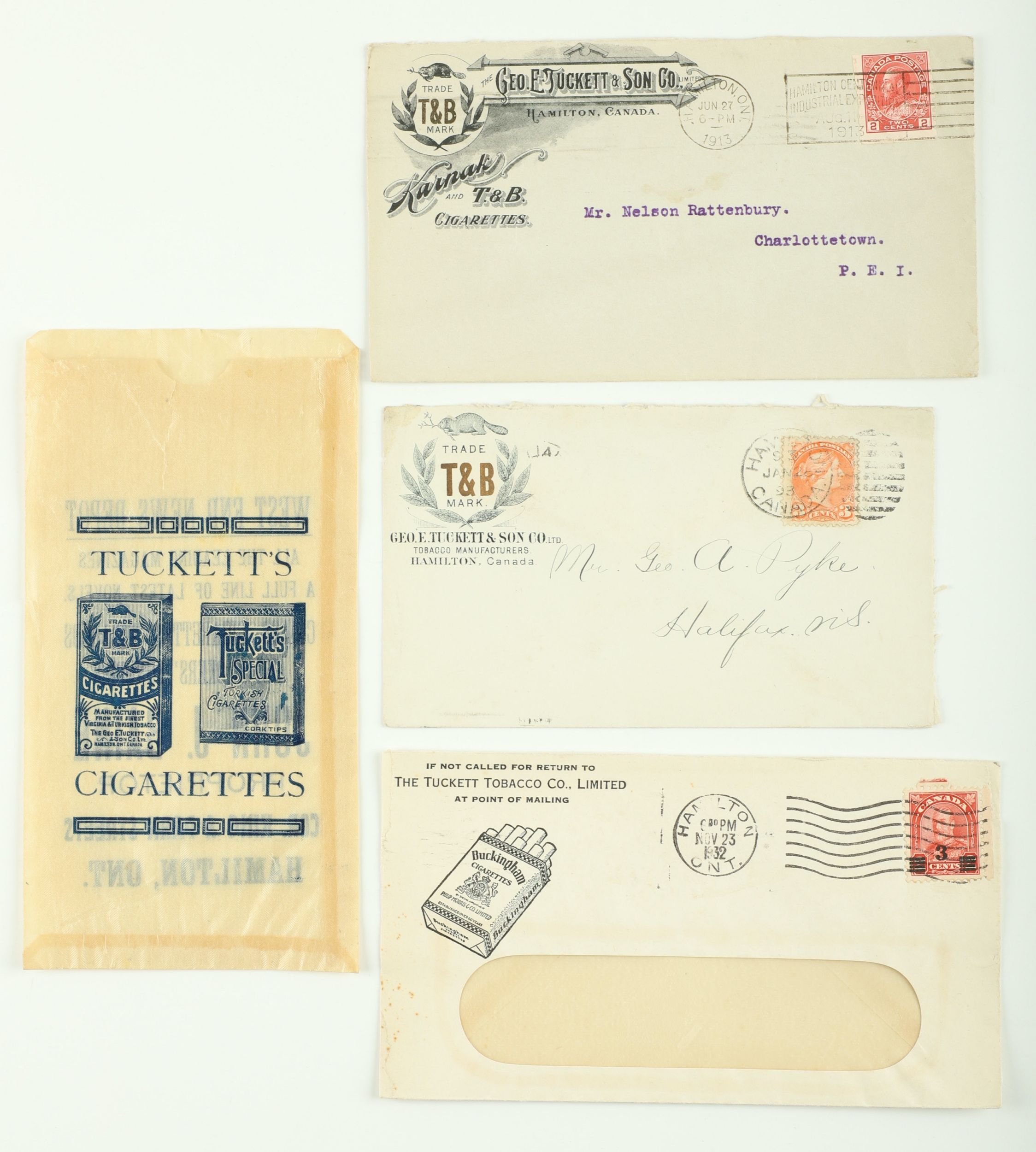From rags to riches: The tobacco king who kept on ‘rolling’
50 Tuckett’s Tobacco advertising lots sold at auction
Alys Mak-Pilsworth holds a framed photograph of George Elias Tuckett at Miller & Miller Auctions.
Motivational speaker Zig Ziglar once said “You don’t build a business – you build people – and then people build the business”. This statement wholly describes the philosophy of late Hamilton-based business mogul George Elias Tuckett (1835-1900). In true rags-to-riches fashion, Tuckett built an industry-leading Canadian tobacco empire in the late 19th century with thanks to his persistent entrepreneurial spirit and unparalleled respect for the working man.
This past December, Miller & Miller closed out another successful year with a highly anticipated sale of Petroliana & Advertising. The sale featured the most comprehensive Tuckett’s advertising collection ever amassed. Prior to the sale, consignor Domenic Malfara admitted that his ‘addiction’ to all things Tuckett’s began in total innocence.
“I stumbled upon a ‘left handed’ Tuckett’s Old Squire pocket tin and soon realized it was a part of a series of Old Squire pocket tins,” said Malfara. “I’m compulsive. When I start a puzzle or set a goal I need to finish it”. And so his journey began.
Similar in spirit, George Elias Tuckett had the determination of a bulldog. True to most entrepreneurial journeys, false starts were the fuel that powered his engine. From opening a shoe store in Hamilton in 1852, to a brief foray into glass-making, Tuckett dabbled in multiple industries before discovering that the tobacco business provided the ‘spark’ he was after. After failing in two partnerships with established tobacconists, he hired a small team to manufacture cigars on his own. After five years, Tuckett gave up cigar making in favour of manufacturing plug tobacco with Alfred Campbell Quimby, a fellow Hamilton-based tobacconist. Tuckett was determined to succeed. When the American Civil War threatened his supply of tobacco, Tuckett went behind the Confederate lines in Virginia to purchase tobacco and ship it back as Canadian property. Although successful, this elaborate scheme took a toll on his health. The business was dissolved after just two years.
To Malfara, collecting Tuckett’s was as much about celebrating the life of a brave entrepreneur as it was about collecting what he produced. “While solving problems in my daily business affairs, I am inspired by a man who tried just about everything before succeeding. Defeat was never an option”.
Winston Churchill once said, “Success consists of going from failure to failure with no loss of enthusiasm”. When Tuckett joined forces with local bookkeeper John Billings to form T&B (Tuckett & Billings), things started to hum. By 1868, T&B employed 70 people at its King Street factory in Hamilton. Brands including Marguerite, Old Squire, and Orinoco were stamped with the widely-recognized ‘T & B’ trademark. The brand was everywhere. When Billings retired in 1880, Tuckett’s son, also George, became a partner and the company was renamed ‘George E. Tuckett & Son”. They built a state-of-the-art facility on Queen Street in Hamilton and grew the company to more than 400 employees by the 1880s.
The Queen Street factory was a direct embodiment of Tuckett’s cutting-edge operational methods. Production began on the upper floor and flowed downward, floor-by-floor, until all phases were complete and it was ready to ship from ground level. Through ‘piece-work’ incentives, employees were rewarded for daily output. ‘Rollers’, for instance, could hire and pay teenaged children to remove stems from the leaves in order to speed up production and increase their piece-work quota for the day. This was a clever way for Tuckett to increase grassroots production efficiency, while providing his staff with the opportunity to increase their income. The Queen Street factory was a beehive of efficiency.
Tuckett championed labour relations initiatives that were light years ahead of his time. While it was common for factory workers to put in regular 12-hour days, Tuckett voluntarily reduced shifts to 9-hours. He rewarded hard work with profit-sharing incentives and routine bonuses. He also designed fire escapes and lunch rooms (which were highly uncommon workplace features at the time).
This lot of Tucketts’s Advertising Ephemera included various postcards, envelopes, receipts, packaging designs, and an employee survey.
Tuckett’s annual staff Christmas event was highly anticipated. He would review the year, recite factory rules, communicate reasoning for any recent firings, and then proceed to hand out bonuses including cash prizes, turkeys, and gifts. Employees with 21 years of service were awarded the gift of a building lot and $225. Naturally, the positive publicity arising from his progressive labour systems and business success led Tuckett into politics. He was elected Mayor of Hamilton in 1896 after a landslide victory.
Offered as lot 358 in the sale was this panoramic photograph of G. E. Tuckett Limited staff, a Tuckett's 10K 5-year service ring, gold-filled 10-year and 35-year service pins, and a Deed of Land dated 1878 for George Tuckett. The lot sold for $295.
George Elias Tuckett passed away in 1900. His son continued the company operations until it was sold to Imperial Tobacco company in 1930.
A cigar smoker himself, Malfara reflects on the sale of his extensive collection; “The thrill is in the hunt, and I enjoyed every minute of it”.
The sale took place at Miller & Miller Auctions on December 4, 2021, which would have been George Elias Tuckett’s 186th birthday.
Story by Tess Malloy
Tess is a freelance writer and history enthusiast who enjoys unearthing interesting stories about remarkable people and objects. Tess has written for The Miller Times for four years.
Auction Details:
Petroliana & Advertising
December 4, 2021, 9am
Online-only event
Did you enjoy this story? Feel free to share it using the links below:


















